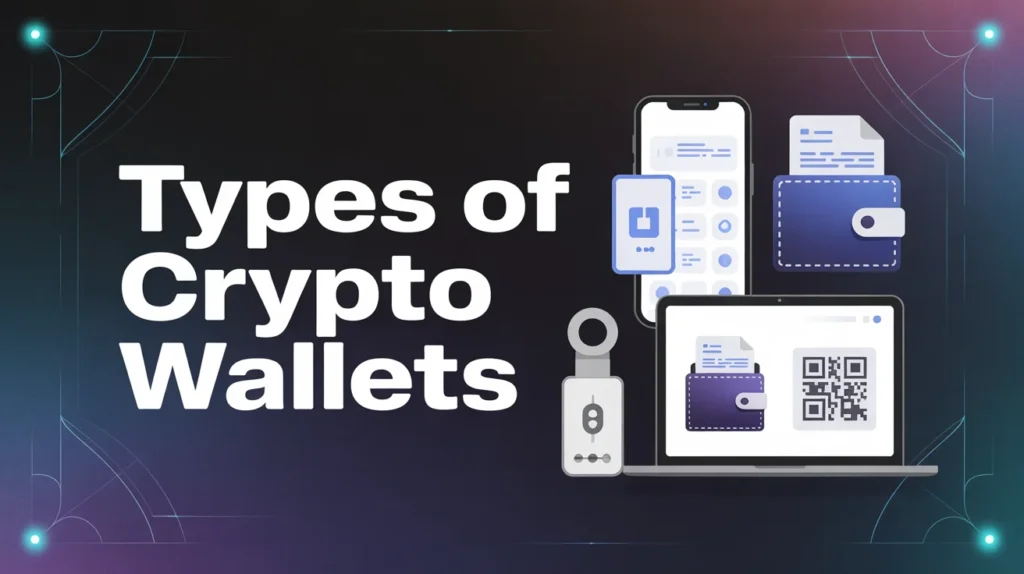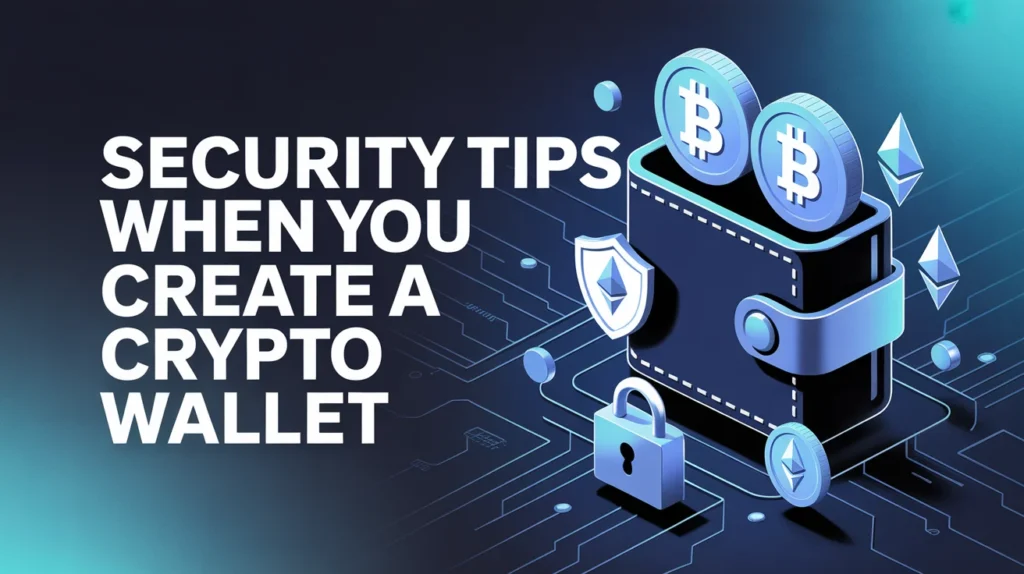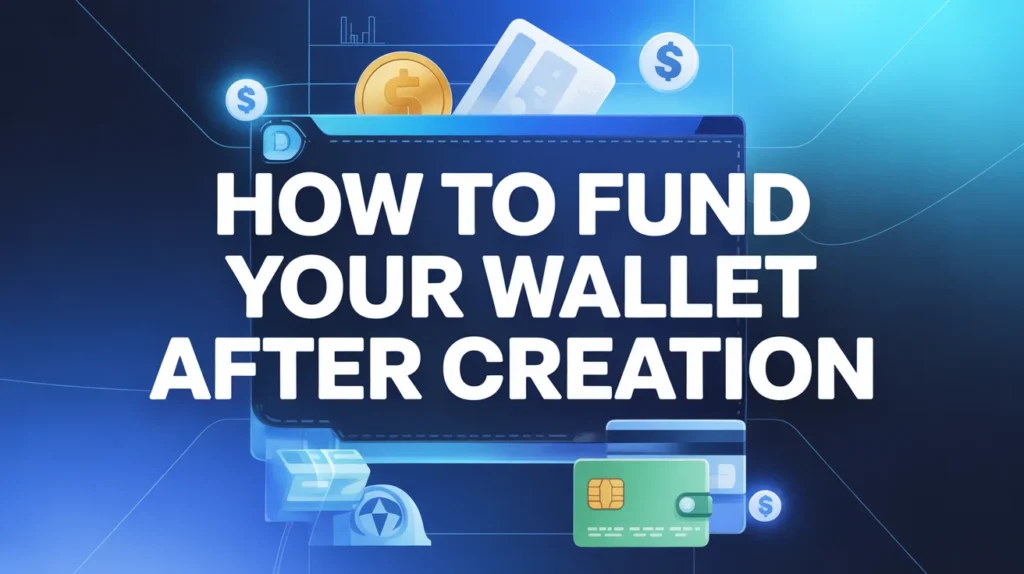In today’s digital age, the world of cryptocurrency is expanding at lightning speed, and knowing how to create a crypto wallet has become essential for both beginners and seasoned investors.
Whether you’re planning to hold Bitcoin, Ethereum, or any other digital asset, your crypto wallet acts as a personal vault and gateway to the blockchain. Without a secure wallet, owning cryptocurrencies is like having gold without a safe place to store it.
Learning to set up your wallet the right way ensures safety, convenience, and easy access to your funds. In this guide, we’ll walk you through everything you need to know about creating a crypto wallet, from types of wallets and setup steps to security best practices.
What Is a Crypto Wallet?
A crypto wallet is a digital tool that allows you to store, send, and receive cryptocurrencies securely. Unlike traditional wallets that hold physical money, a crypto wallet stores your private keys — digital codes that give you access to your coins on the blockchain.
Key Features of a Crypto Wallet
- Stores private and public keys
- Enables sending and receiving crypto
- Provides secure access to blockchain networks
- May include backup and recovery features
Types of Crypto Wallets

When you decide to create a crypto wallet, the first step is understanding the different wallet options available. Each type balances security, accessibility, and convenience differently.
Wallet TypeStorage MethodSecurity LevelAccessibilityBest ForHardware WalletOffline deviceVery HighModerateLong-term investorsSoftware WalletMobile/DesktopMediumHighFrequent tradersWeb WalletOnline browserLowerVery HighBeginnersPaper WalletPhysical printHighLowCold storageExchange WalletCentralizedMediumHighNew users
Steps to Create a Crypto Wallet
Here’s a simple step-by-step process for setting up your own wallet:
- Choose Your Wallet Type – Decide between hardware, mobile, desktop, or web wallets.
- Download or Purchase the Wallet – Get the app from official sources or buy hardware wallets like Ledger or Trezor.
- Install and Set Up – Follow the on-screen instructions to configure your wallet.
- Create a Strong Password – Use unique, complex combinations.
- Secure Your Recovery Phrase – Write it down and store it offline in a safe location.
- Add Cryptocurrency – Transfer crypto from an exchange to your wallet address.
Benefits of Creating a Crypto Wallet
- Full Control: Manage your own funds without depending on banks.
- Enhanced Security: Private keys remain with you.
- Global Access: Use your funds from anywhere in the world.
- Versatility: Supports multiple coins and tokens.
- Investment Protection: Reduces risks of hacks from centralized exchanges.
Best Crypto Wallets in 2025
Here are some of the top-rated wallets to consider:
- Ledger Nano X (Hardware) – Highly secure for long-term storage.
- Trezor Model T (Hardware) – User-friendly with advanced features.
- MetaMask (Software) – Popular for Ethereum and DeFi applications.
- Trust Wallet (Mobile) – Great for beginners with multi-coin support.
- Coinbase Wallet (Web/Mobile) – Seamless integration with the Coinbase exchange.
Security Tips When You Create a Crypto Wallet

Security is the most important part of owning digital assets. Follow these tips to keep your funds safe:
- Always download wallets from official websites or app stores.
- Enable two-factor authentication (2FA).
- Store recovery phrases offline.
- Keep software wallets updated.
- Avoid sharing your private keys with anyone.
Common Mistakes to Avoid
When creating your crypto wallet, beginners often make mistakes that lead to losses. Avoid these pitfalls:
- Losing recovery phrases – Without them, access is gone forever.
- Using weak passwords – Easy to hack.
- Storing large funds on exchanges – Exchanges can be hacked.
- Ignoring updates – Outdated wallets may have vulnerabilities.
- Phishing scams – Clicking fake wallet links can compromise your crypto.
Mobile vs. Hardware Wallets: Which Should You Choose?
- Mobile Wallets are best for quick access and trading but less secure than offline options.
- Hardware Wallets provide maximum security but are less convenient for daily transactions.
For beginners, starting with a mobile wallet like Trust Wallet is ideal. For large investments, consider combining it with a hardware wallet for maximum protection.
How to Fund Your Wallet After Creation

Once you’ve created your wallet, the next step is adding funds. Here’s how:
- Buy cryptocurrency from a trusted exchange (e.g., Coinbase, Binance, Kraken).
- Copy your wallet’s public address.
- Transfer the purchased crypto to your wallet address.
- Confirm the transaction on the blockchain.
Using Your Crypto Wallet for Transactions
After setting up and funding your wallet, you can use it for:
- Sending crypto to friends or merchants.
- Receiving crypto payments or transfers.
- Interacting with decentralized apps (dApps).
- Staking coins to earn passive income.
Future of Crypto Wallets
As blockchain technology grows, crypto wallets will evolve. Expect:
- Integration with Web3 and DeFi apps.
- Biometric security features.
- AI-driven fraud detection.
- Multi-chain support across blockchains.
FAQs About Creating a Crypto Wallet
1. Do I need money to create a crypto wallet? No, most wallets are free to create. Hardware wallets, however, require a purchase.
2. Can I create multiple crypto wallets? Yes, you can have multiple wallets for different purposes (e.g., trading, long-term storage).
3. What happens if I lose my recovery phrase? Without it, you may lose access permanently. Always back it up securely offline.
4. Which is the safest wallet for beginners? Hardware wallets are the safest, but mobile wallets like Trust Wallet are beginner-friendly.
5. Can I use the same wallet for different cryptocurrencies? Yes, multi-currency wallets support storing and managing multiple coins in one place.
Conclusion
Learning how to create a crypto wallet is the first step toward financial independence in the digital economy. With the right wallet, you gain full control of your funds, enjoy enhanced security, and open doors to the exciting world of decentralized finance.
Whether you choose a hardware wallet for maximum safety or a mobile wallet for convenience, remember that the key to success is security and awareness.
By following the steps and best practices outlined in this guide, you’ll be ready to manage, grow, and protect your crypto investments with confidence.


